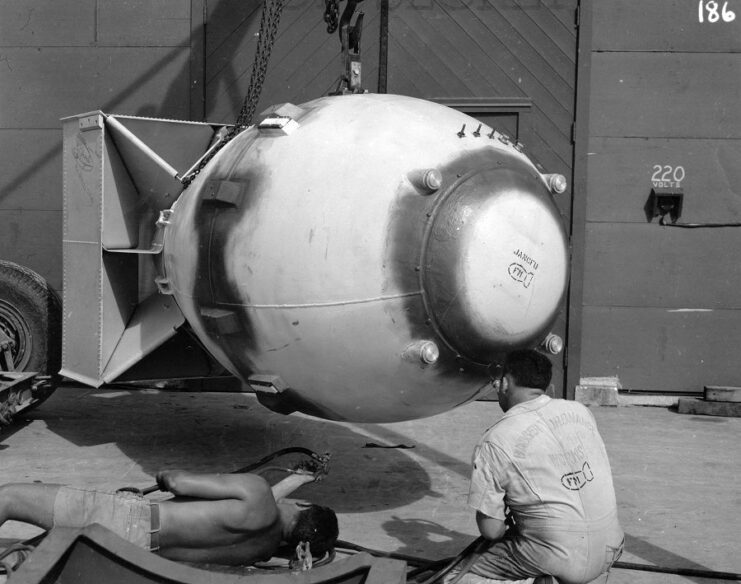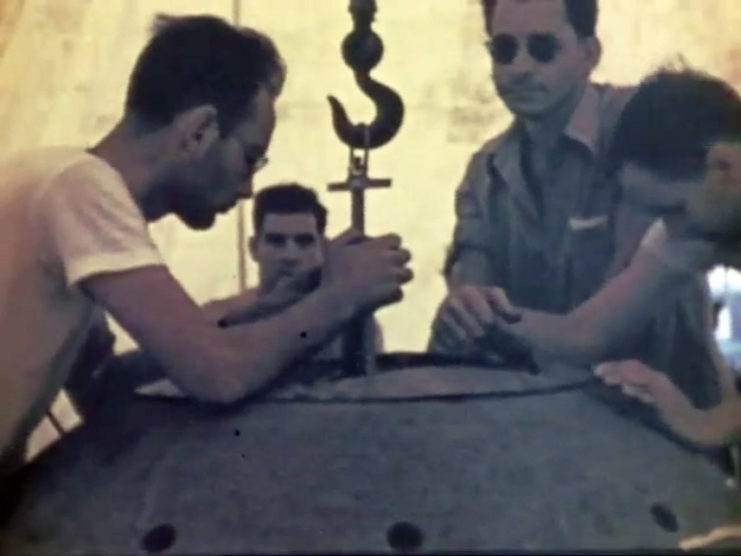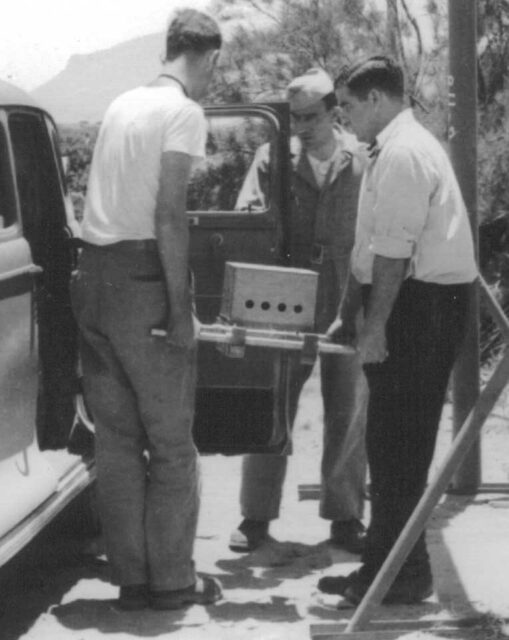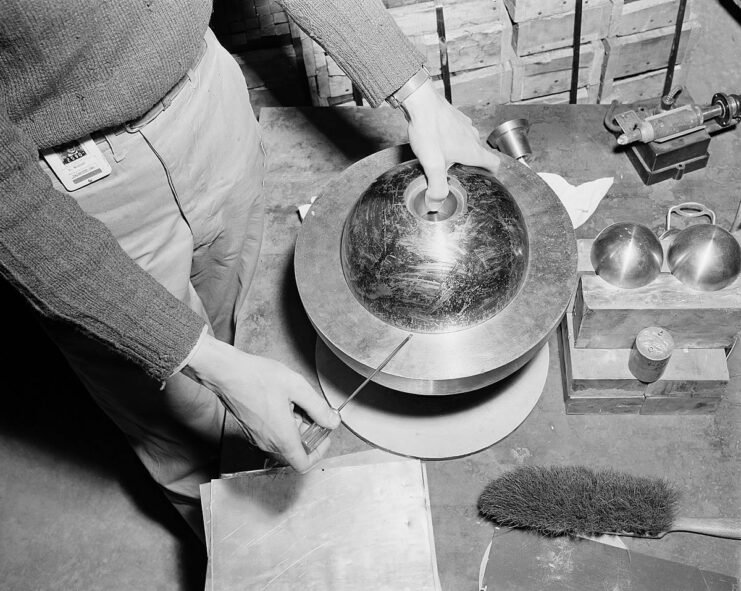In August 1945, the United States dropped two atomic bombs on Japan, marking the only instance in history where nuclear weapons have been used in warfare. The devastation caused by these bombs was immense – and a third bomb was prepared for deployment. Thankfully, Japan surrendered just days before it could be used, sparing tens of thousands of lives.
Although this bomb never claimed any lives in combat, its plutonium core tragically led to the deaths of two American physicists, earning it the grim nickname, “Demon Core.”
A third bomb

It’s easy to think that the Manhattan Project, the U.S. initiative to create atomic weapons, was only ever meant to produce two bombs. However, this wasn’t the case. The project expanded into a large-scale production operation for nuclear weapons. Most of the resources in this multi-billion-dollar endeavor went toward obtaining enriched uranium and plutonium, which were particularly challenging to produce at the time.
By the summer of 1945, the project had produced enough material for three bombs, with a fourth in the pipeline. This material was designated for the Trinity Test and the deployment of the Little Boy and Fat Man bombs. When Japan didn’t immediately surrender after the two bombs were dropped, the U.S. military began to prepare a third, which was scheduled for release on August 19.
However, Japan surrendered on August 16.
At the time, few involved in the Manhattan Project expected that only a small number of bombs would be used. Many believed more would be required to force Japan to surrender, and some worried that even with a surrender, the war might reignite. In the end, the third device was never used, leaving the U.S. with its 6.2 kg, nine-cm wide plutonium core. This core was later repurposed for testing and incorporated into other projects.
Demon Core

One notable experiment aimed to determine the core’s criticality – the stage at which the fissionable material can sustain a nuclear chain reaction. During these tests, scientists partially surrounded the core with neutron reflectors, which redirected neutrons back into the core, amplifying the reaction.
Had the core been fully surrounded by neutron reflectors, it would have rapidly achieved supercriticality, resulting in a huge burst of radiation.
The safety protocols at the time were alarmingly lax, permitting scientists to conduct these experiments manually.
First accident

Physicist Harry Daghlian was performing this experiment in 1945 when it went fatally wrong. He was placing neutron-reflecting tungsten carbide blocks around the core to bring it closer to criticality when he accidentally dropped one of the blocks onto the core. Daghlian removed the block as fast as he could but it was too late. In that brief moment, the core entered super criticality and released a lethal amount of radiation.
Daghlian spent the next three weeks battling radiation sickness before finally passing away. After Daghlian’s death, much stricter safety protocols were brought in to prevent it from happening again.
The following year one of Daghlian’s colleagues, Louis Slotin, took over the experiments. Slotin was a brilliant physicist but was known to disregard safety.
Slotin’s experiments with the core were similar to Daghlian’s but this time two half-sphere neutron reflectors would be slowly closed around the core to increase the core’s activity. However, to prevent another accident, metal spacers were placed between the half spheres to stop them from enclosing the core fully.
Second incident

Quite the risk-taker, Slotin ignored the protocol and did away with the spacers, using his own method instead. His method was faster but was also much more dangerous. Slotin would use a simple flathead screwdriver to maintain the gap between the reflectors, adjusting it by hand as necessary. He became quite proficient at this technique and became known among his colleagues for “tickling the dragon’s tail,” as it was called at the time.
Slotin’s colleagues were aware that this technique was extremely risky, and even tried to warn him, but he continued anyway.
On May 21, 1946, Slotin was performing the experiment in front of a small group of people in a Los Alamos laboratory. Using his usual technique, he lowered the two neutron reflecting half-spheres around the core, using the screwdriver to keep them from fully closing.
However, on this occasion, the screwdriver slipped by a tiny amount, allowing the two neutron reflectors to completely enclose the core. The core immediately entered super criticality, emitting a bright blue flash of light and a powerful blast of radiation.
End of the ‘Demon Core’

Slotin quickly removed the neutron reflectors, but like Daghlian, the damage was already done. He had been showered by an extremely high dose of radiation. As he was leaning over the core at the moment the accident happened, he absorbed much of the radiation, likely saving the lives of the others in the room.
Within minutes of the accident, Slotin was already showing signs of radiation poisoning. He died just 9 days later.
New! Want to become a trivia master? Sign up for our War History Fact of the Day newsletter!
After the plutonium sphere claimed two lives, it became known as the “demon core.” It was meant to be used Operation Crossroads nuclear tests, but this never happened and it was eventually melted down and recycled into other cores.
